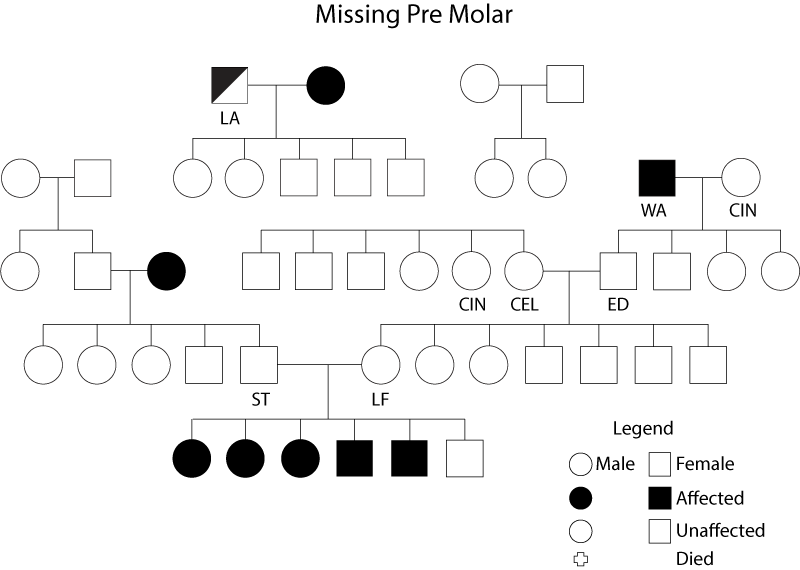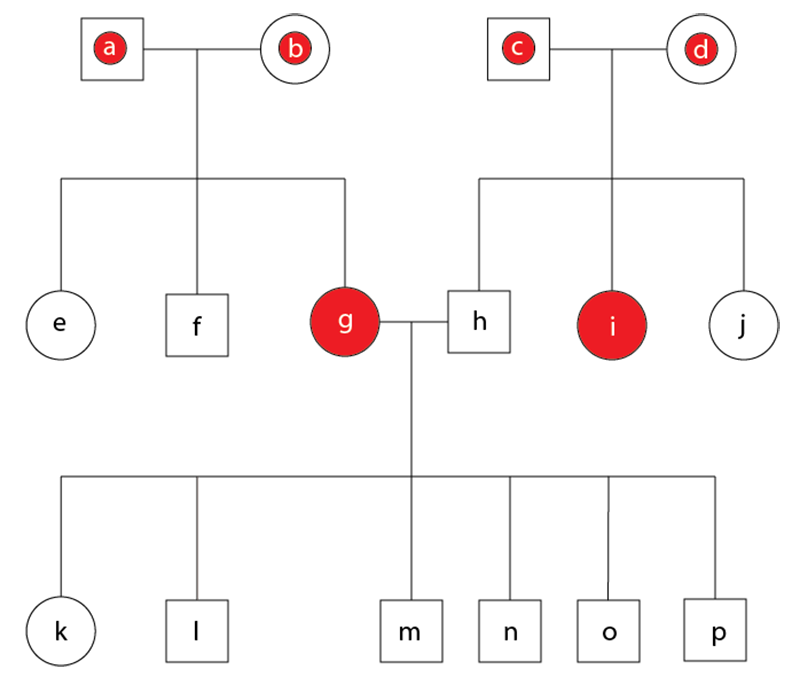Parent Category:
A Breed and Replace Strategy
Introduction
Experts know that there is no substitute for hard work, but consider the alternative. Take a well-bred superior pup that is badly-reared dogs and not properly socialized. It will not achieve the potential of its pedigree and it is likely to be cowardly despite its good breeding. This means that those who do their homework and strive to manage their problems will continue to have the advantage over those who don’t, but there are no guarantees.
Pedigrees-The Right Tool
Over the centuries, pedigrees have been used as the breeder's tool to map the inheritance of genetic traits from one generation to the next. It is this record that serves as a graphic representation for genetic inheritance. At a glance, a pedigree looks very much like a family tree, because you are able to trace a family's name and the various family members through successive generations. Through the tree, cousins, aunts, uncles, grandparents and great grand parents can be traced. Animal breeders added titles, certifications and the results of performance to help them understand a dog's value, but unfortunately this information was not heritable. What they learned was that type breedings and the mating of champions to champions did not produce more champions. It became clear that more and different kinds of information were needed. Breeders soon learned that they did not need to become a geneticist in order to breed the better dogs but they did need to know more about the ancestors. Misguided about breeding methods, some used outcross breedings in order to avoid genetic disorders. Others excluded those found to be affected or known to be a carrier. Neither approach proved to be effective. Those who repeated the use of outcross breedings in an attempt to dilute the detrimental effects of the recessive genes learned that outcross breedings tend to hide the carriers but only temporarily. The risk of producing the unwanted traits does not diminish because the genes can not be diluted; they are either present or not. More importantly, breeders learned that the recessives can skip one or more generations before they reappear.
Those who eliminated dogs found to have problems regardless of the dog’s qualities only reduced the number of good dogs in their breed, (which quickly affected their breed’s gene pool). It did not rid the breed of its problems because the frequency of carriers in some breeds is as high as 50% (Bell). For example, in the 1950’s when radiographs became the popular diagnostic tool to identify hip dysplasia (HD), thousands of good quality dogs were euthanized or excluded from breeding programs when they did not pass the phenotypical standard set for evaluating hips (X-rays). After years of exclusion, HD did not go away and many breeding programs were devastated in the process. These mistakes continued until breeders began to change their focus. Instead of thinking about the breeding of an individual dog, they began to think about the dog as a pedigree of ancestors. By selecting against pedigrees that had known carriers, breeders were able to retain the desirable traits that took years to acquire and also gain control over their problems.
A New Approach
One of the basic principles associated with the study of pedigrees involves the collection of information. The more detailed the information the more likely it is that the breeder will be able to understand a problem and reach a goal.But even when breeders began to collect more information, many of their problems persisted and progress continued to be slow. It wasn’t long before they learned that the solution too many of their problems had to include specific kinds of information and a better kind of pedigree. The most popular pedigree has historically been the Traditional pedigree which only collects the names of dogs, their titles and certifications. Too often these characteristics give the false impression that this kind of information is heritable. Related to this problem is the small sample of ancestors involved in a three-generation pedigree (N=14) and the fact that the littermates of these direct descendents and their siblings are generally not included in the study of a pedigree. Because of these logistical limitations, a new approach and a better pedigree was needed, one that would capture specific kinds of information about more relatives. The pedigree best suited for this purpose is called the Symbols Pedigree. It gets its name because symbols, rather than names and titles, are used to identify each ancestor. This pedigree is designed to collect detailed information about the littermates of the sire and dam and the siblings of the grand parents and great grandparents.It also replaces the requirement to collect names, titles and certifications earned by the ancestors. The Symbols Pedigree approaches the collection of information differently. It relies on the use of two symbols rather than the names of each ancestor. Circles are used to identify the females and squares are used to identify the males. Each symbol is then color coded in order to identify the specific traits of interest including the carriers, those affected and the normals. Specific colors are assigned to each trait and disease of interest. When an affected individual is identified, its symbol is shaded with a specific color that is selected by the breeder to indicate the presence of a trait or disease. Carriers are coded using a dot of the same color that was used to code the presence of a trait or disease (Battaglia, 1986). In the example that follows the assumption is that the breeder and or breed standard will fault missing premolars. Figure 1 illustrates how the Symbols Pedigree would be coded if missing premolars were the trait of interest. In this example, the color black is used to designate missing premolars. In this pedigree, sire "ST" and dam "LF" and all of their siblings are coded to show they have full dentition. In spite of these facts, this breeding produced a litter with 5 of 6 offspring (coded black) with missing premolars. There are many traits including missing premolars whose heritability is not known. This makes the problem more difficult to solve. In these instances the breeder must rely on what is known. By collecting information about the littermates of the direct ancestors, more information can be used to determine the source of the problem and the likelihood of its appearance. In Figure 1, there are ancestors with missing teeth on both sides of the pedigree. In this litter only one puppy (male) had full dentition. This male should be considered a high-risk candidate as a breeding animal because littermates are good indicators of the traits carried in a pedigree. In addition to using pedigree analysis to understand a problem other tools should be employed. For example puppies can be radiographed at 8-12 weeks of age before their adult teeth appear. The radiograph will show the "buds", or small round premature adult teeth, that have not erupted. If 42 "buds" are present, the pup should have full dentition when it is an adult.
Figure 1

With this kind of detailed information breeders can better understand and assess risk should they choose to breed dogs that have carriers in their pedigrees. The partial shading of symbol (LA) indicates that this individual (male) has a missing premolar. The remaining space in his symbol can be used to code another trait.
A second example is used to further illustrate the value gained by expanding the number of ancestors and coding what is learned about them. Figure 2 illustrates how a breeder, using the color red, would code a pedigree for the disease called progressive retinal atrophy (PRA). The term PRA is an "umbrella" word that includes all inherited diseases that cause progressive degeneration of the retina. Unfortunately this disease has a late onset and causes blindness. Not all retinal disease is PRA and not all PRA is caused by the same genetic defect. The inheritance pattern of retinal disease in a specific breed might be dominant, recessive or X-linked – a different gene. The most prevalent type of PRA, progressive rod cone degeneration or prcd, has been identified in 13 breeds/varieties as an autosomal recessive condition. A dog's status as normal/clear, carrier, or affected, can be determined with the highest degree of accuracy available when genetic testing is used (Felix, 2005). A list of the canine genetic tests is provided in Part II. To date, breeds affected with prcd are: American Cocker Spaniel, American Eskimo, Australian Cattle Dog, Australian Stumpy Tail Dog, Chesapeake Bay Retriever, Chinese Crested, English Cocker Spaniel, Entelbucher, Labrador Retriever, Miniature and Toy Poodle, Nova Scotia Duck Toiling Retriever and Portuguese Water Dog. Other types of PRA can be diagnosed by direct tests in the Irish Setter and Sloughi; autosomal dominant PRA can be detected in the Old English, Mastiff and Bullmastiff, X-linked PRA in the Samoyed and Siberian huskies; and Type A PRA in the Miniature Schnauzer (Felix, 2005).
In Figure 2, two females ("g", "i") are affected and their symbols are shaded red. In this example the breeder did not know that carriers were bred to each other until they produced affected offspring with PRA. Once the breeder knows that the parents are carriers they should be coded with a red dot ("a", "b", and "c", "d"). In the subsequent breeding ("g" to "h"), all of the resultant offspring (k-p) will be carriers because their dam ("g") carries two mutant genes. Regardless of which gene she passes on to her offspring they all will receive one recessive gene for PRA, which results in making them all a carrier. A red dot should be placed in the symbol of each of these pups (k-p).
Figure 2

As mentioned earlier, color coding not only identifies the location of traits but the frequency of their occurrence. With this level of detail information, breeders are better able to understand the potential risks and weaknesses of their pedigrees. For example, the chances of producing an undesirable trait increases when there are ancestors on both sides of a pedigree that have the undesirable trait. If a genetic test is available that can determine the carriers, the offspring should be tested before breeding. If no test exists the selection of the best pup can be made with the understanding that its pups and those of its littermates will be tracked for possible unwanted disorders. In the next article (Part II) we will continue this discussion and learn how new methods and tests can be used to control and manage the carriers.
References
Battaglia, C., 1978. Genetics - How to Breed Better Dogs. T.F.H., Neptune, NJ, pp. 51-54.
Battaglia, C., 1986. Breeding Better Dogs. BEI Publications, Fifth Printing, Atlanta, GA, pp. 52-54.
Bell, J., 2007. Breeding Strategies for the management of genetic disorders. The Hydrant, Aug., pp. 8-9.
Bell, J., 2000. Choosing wisely, American Kennel Club, Gazette, New York, NY., Aug., Vol. 117, Number 8, p. 51.
Keller, G., 2007. The use of health databases and selective breeding. Orthopedic Foundation of America, St Louis, Mo.
Brewer, G., 2005. Canine molecular genetic disease. Proceedings, Tufts’ canine and feline breeding and genetics conference, Sept., 30-Oct., 1, Sturbridge, MA
About the Author
Carmen L Battaglia holds a Ph.D. and Masters Degree from Florida State University. As an AKC judge, researcher and writer, he has been a leader in promotion of breeding better dogs and has written many articles and several books.Dr. Battaglia is also a popular TV and radio talk show speaker. His seminars on breeding dogs, selecting sires and choosing puppies have been well received by the breed clubs all over the country.

